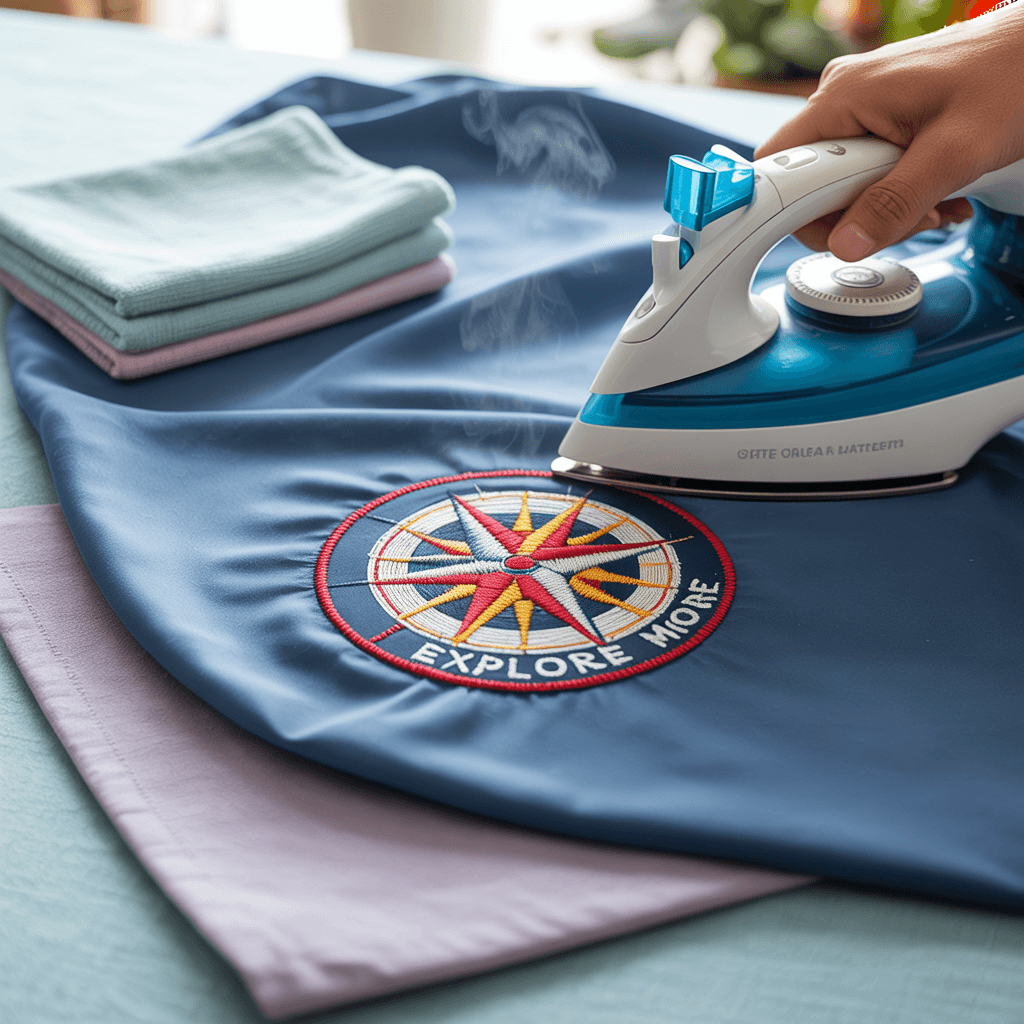Nothing is quite as satisfying as peeling back a perfectly placed iron-on patch to reveal your design crisp and proud. Let’s face it: polyester can be a diva under heat, too much and you’re left with a melty mess, too little and your patch refuses to bond.
If you’ve ever stared at an iron like it’s some kind of unpredictable gadget from outer space, you’re not alone. Mastering iron-on patches on polyester requires a bit of finesse, some practical wisdom, and a few clever tricks up your sleeve.
Here at Patch Makers UK, we live and breathe patches. Whether you’re applying custom logo patches for hats or customizing jerseys for a sports team, we want you to do it like a pro. Keep reading for insider techniques that help you put the “flawless” in your iron-ons, without the stress.
Understanding Polyester: The Tricky Textile
Before you jump in, let’s talk polyester. Known for its durability and easy care, this synthetic fabric also happens to be super sensitive to heat. Iron too hot and you’ll damage the fibers; too cold and the adhesive on your iron-on patches just won’t bond properly. That’s why knowing how to apply iron on patches on polyester is an absolute must. Unlike denim or cotton, polyester requires patience and finesse.
That’s why so many of our customers love the support of a trusted patch maker like us at Patch Makers UK, we specialize in manufacturing high quality embroidered patches made in the UK that stand up to the heat (and the elements).
Plus, we offer a whole range of styles from Custom Embroidered Patches to Custom Chenille Patches, so you can choose what suits your aesthetic. Whether you need personalized clothing patches or want to design your own patch and order one-offs for a custom look, you’ll find the best place to order custom patches with us.
What You’ll Need for Success
Before we dive into the process, gather up these simple tools:
- A household iron with a temperature dial
- A smooth, heat-resistant surface (hard surface like a wooden table covered with a towel)
- Thin pressing cloth or pillowcase
- A stopwatch or timer (optional, but so handy)
- Iron-on patches for polyester, this is key. Our range of custom iron on patches at Patch Makers UK is created especially for synthetic fabrics so you never need to worry about adhesion.
And while you’re preparing your setup, also take a second to check out our service pages for some inspiration. Whether you’re looking for Custom PVC Patches that offer vibrant, durable designs or classic Custom Woven Patches that deliver fine detail on sports kits and work uniforms, we have you covered.
Step-by-Step: Applying Iron-On Patches to Polyester
Once you have everything assembled, it’s time to do the magic. Remember: slow and steady wins this game.
1. Preheat With Caution
Set your iron to a medium-low setting, polyester can easily scorch above 300°F (roughly 150°C). Some iron-on patches require a bit more heat, but always err on the side of caution to protect your fabric.
2. Position & Prep
Lay your garment flat and smooth out any wrinkles. Place your iron-on patches exactly where you want them. Cover the patch with a pressing cloth, this shields your polyester as you work. If you need help choosing the perfect style, check out our article, How to Iron on Patches on Clothes: Step-by-Step Guide for more pro-level tips.
3. Apply Even Pressure
Press the iron down firmly but gently for around 10–15 seconds. Avoid moving the iron around too much, keep it stationary so the heat can penetrate the patch evenly. Repeat as necessary until all edges have adhered.
4. Let It Cool
Allow the garment to sit flat and cool completely before inspecting your patch. Avoid touching the adhesive or flexing the fabric too soon.

Avoiding Common Mistakes
Nothing spoils a perfect iron-on patch like bubbling, lifting edges, or burnt fabric. Keep an eye on these common pitfalls:
- Temperature Too High: Polyester is delicate. Test a small corner or use a sacrificial scrap of fabric if you’re unsure of your iron’s heat.
- Insufficient Pressure: A light touch won’t cut it. Press down firmly so the heat and glue can do their thing.
- Skipping the Cloth Barrier: Even a pillowcase will do, this is your best friend in preventing scorching or discoloration.
- Rushing the Cooling Process: Patience is a virtue; let the adhesive set properly before peeling up edges or putting the garment to use.
Going Beyond the Basics: Pro Tips for Flawless Iron-Ons
Once you master the essentials, there are a few pro tricks that can level up your game and help you get professional-grade results every single time.
Test on a Scrap Fabric First
If you’re nervous about damaging a garment, cut a small swatch of polyester (or use a hidden hem) to do a trial run. This way, you’ll nail the perfect temperature and pressure before tackling your final garment.
Reinforce Problem Areas
Some spots, especially on curved or awkward areas like caps or jacket seams, can be tricky. After pressing the main part of your patch, use the tip of your iron to give extra attention to edges and corners. Trust us, this is where most lifting happens.
Consider a Sewn Edge for Extra Security
Polyester can be slick, so stitching the edges of your iron-on patches will guarantee they stay put forever. If you’d like to explore this further, our article on Can You Use a Steamer for Iron-On Patches? Best Tips & Temps breaks down alternative attachment techniques that can help you decide whether a combo iron-and-sew method is right for your project.
Why Polyester & Iron-Ons Make a Great Match
Despite its sensitivity to heat, polyester is a dream for iron-on patches when treated properly. Its smooth surface allows patches to lay flat and look super crisp. Plus, polyester holds color exceptionally well, so your bright, bold patches pop, making this combo perfect for custom logo patches for hats, custom logo patches for bags, and even custom biker patches for jackets.
And don’t worry about cost either, you can score cheap custom patches with no minimum if you partner with the right best patch makers in the UK. Here at Patch Makers UK, we offer a huge range of UK custom patches so you can buy custom patches online with confidence, knowing you’ll receive top-notch designs and a quick, fast turnaround custom patches UK every time.
What Are You Thinking Now?
By now you probably see why iron-on patches on polyester are a style-savvy move. Whether you want to add flair to a hoodie, team uniforms, or a backpack, iron on patches for polyester deliver a clean and professional look that holds up through countless wears and washes.
And if you’re wondering where to get the best patches, look no further, Patch Makers UK is proud to be the UK#1 Custom Patch Manufacturer. You can explore all kinds of styles on our Custom Leather Patches page if you’re looking for an upgrade with a luxury touch, or go bold with Custom PVC Patches for a waterproof, modern design.
Still not sure which style fits your needs? Reach out to our team, we make it simple to design your own patch and order exactly what you envision.
And when you’re ready to take your patch game to the next level (without all the trial and error), get your custom patches with us at Patch Makers UK. Our experienced team is here to help you every step of the way, feel free to contact us today and let’s make your next set of patches a reality!






